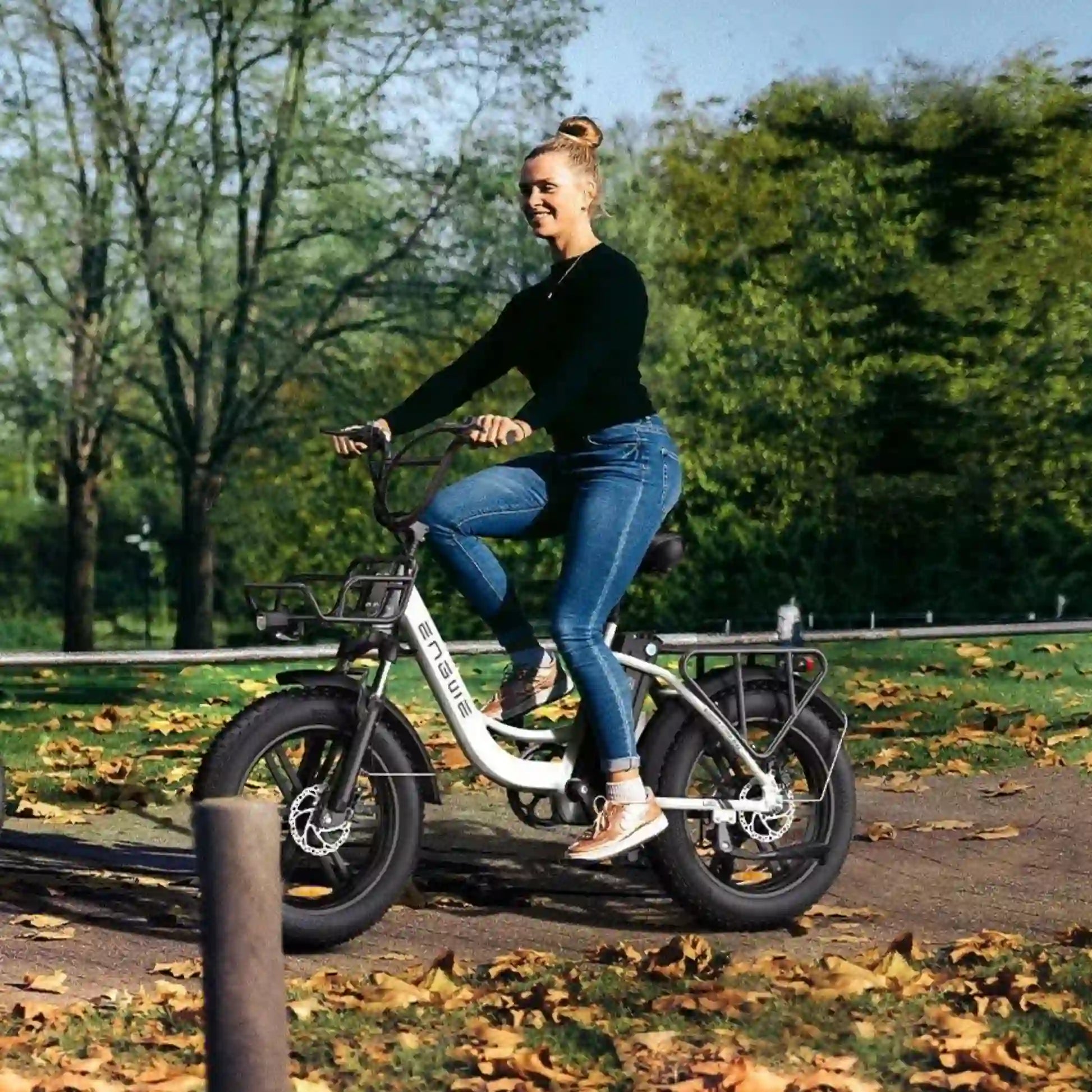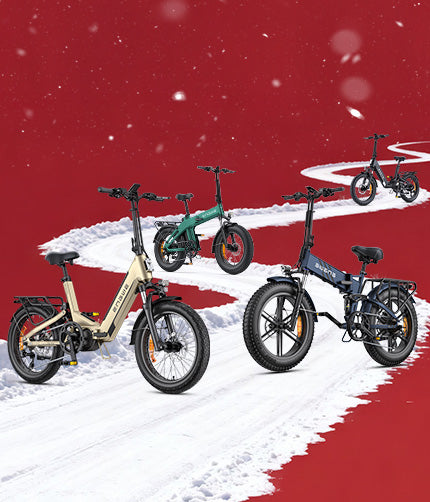The First Dimension: Fundamentals of Fat Tire Pressure
Finally, what is the perfect tire pressure for your fat tire e-bike? There is no single magic number – it is an optimal range that will work best for your unique needs. However, the right Pounds per Square Inch (PSI) will indeed transform your ride, giving you improved grip, enhanced comfort, and pedal efficiency. Here are the five dimensions of fat tire pressure. Armed with that knowledge, you will set the perfect settings to conquer the world on your fat tire e-bike. The first dimension is the fundamentals of fat tire pressure. While the tires on our skinny road bikes are inflated to upwards of 100 PSI, fat tires operate on a substantially lower PSI scale – around 5 to 30. This is due to their immense air volume, which can replace a good amount of suspension in providing you with a massive contact patch and gorilla grip. The takeaway is high versus low pressure. Essentially, high pressure lowers rolling resistance, allowing you to ride more efficiently on flat surfaces. In contrast, low pressure increases tack and shock absorption, which have more critical roles on rough surfaces. It can grind you to a halt on flat surfaces.
The Second Dimension: Personal and Environmental Factors
This dimension is all about what the controlling or key personal and environmental factors require for your ideal PSI. There is no perfect, one-size-fits-all answer because no two rides or riders are identical. This factor balance and adjustment are the “secret” to unlocking your fat tire e-bike’s full potential. For example, heavy riders will need more air to support them and thus prevent the tire from collapsing or, worse, causing a rim strike if it slams into a rock or curb at full speed. Tires for lighter riders can be run with lower pressures to make riding feel more comfortable, albeit a little risky due to the increased grip. It changes wildly for every rider, but the most important factor of all is the surface you ride on. Some more factors are given below:
Weight of Rider and Cargo
Base it on the middle of your tire’s range and add 1 PSI for every 20 pounds you are over a 150-pound baseline. Roughly speaking:
| Rider Weight (pounds) | Recommended PSI Range |
|---|---|
| 0-150 | 7-14 PSI |
| 151-170 | 7-15 PSI |
| 171-190 | 8-16 PSI |
| 191-210 | 8-17 PSI |
| 211-230 | 9-18 PSI |
If you have more than 230 pounds on your e-bike, you should take measures.
Ambient temperature
Air expands or contracts with temperature. For every 3°C change, expect about a 1 PSI difference.
* 21°C: 15 PSI
* 18°C: 14 PSI
* 15°C: 13 PSI
* 12°C: 12 PSI, etc.
Air contracts in the cold and makes your e-bike tire less inflated. When snow falls and you ride from 3°C to -1°C, each tire can drop by several PSI if they are not checked first.

Dimension Three: Tools and Process
This dimension entails the actual steps and tools needed to find and accurately set your pressure. Unfortunately, the vast majority of riders use the “thumb press” method, which can be inaccurate by upwards of 20+ PSI. Buying a good digital pressure gauge is the best money you could spend as a fat tire e-biker. This purchase will help avoid expensive uneven tread wear, expensive rim damage, and an even more costly pinch flat. A floor pump with a big, easy-to-read gauge is your best tool.
-
Get the right tools
You will need a reliable pump and a separate low-pressure gauge. Tools such as these low-pressure gauges are more accurate for fat bikes in the 0-30 PSI range.
-
Find your base
Inflate your tires to the middle of the manufacturer’s recommended range, say, 15 PSI for a 5-30 PSI tire.
-
Test your ride
Ride recreationally on your most frequent terrain. How does it feel? Is the bike too bouncy? Too sluggish and hard to turn at low speed?
-
Adjust and repeat
In 2 PSI increments, let out or add air. You must take a test ride after each adjustment until you arrive at the perfect PSI where your bike feels comfortable yet responsive.
-
Take notes
Record in a small logbook the PSI that works best for different situations. This is better than guesswork. For instance: Pavement 22 PSI, Snowy trail 8 PSI, etc.
The Fourth Dimension: The E-Bike Itself (ENGWE M20)

Finally, the fourth dimension is understanding how an e-bike’s components create its own movement. When it comes to pressure, a well-built e-bike makes alterations more effective because you are working with them to get you where you need to go. The ENGWE M20 is the beast you need if you want to experience the best possible combination of cushy and all-terrain performance. The M20 is an adventure machine that is designed to take advantage of the full potential of its fatty tires’ properties.
Premium Suspension System:
The M20 boasts an exceptional dual suspension system with a front hydraulic shock and a rear air shock absorber. This adjustable setup can absorb twice the impact of standard e-bikes, allowing you to run slightly higher, more efficient pressures with no discernible effect on ride smoothness.
High-Quality Fat Tires:
It features sturdy 20 x 4.0-inch tires with a three-layer structure. In virtually any tire pressure range, from firmer pavement settings to ultra-low pressure levels, this three-layer rubber is virtually flawless, making the M20 an exquisite performer.
Optimized Performance and Range:
When it comes to tire pressure, a properly optimized setup means longer battery range. Your perfectly set pressures, as well as the M20’s high-capacity battery and double-battery system, benefit from this optimized setup with less penalty.
A Complete Control Package:
With its Shimano 7-speed gear collection and powerful dual-disc brake assembly, the M20 provides top-of-the-line riding comfort and full control over every environment, even if you’re riding on ice.


The Fifth Dimension: Common Problems and Advanced Tuning
Lastly, the fifth dimension discusses all the common problems and more advanced tuning techniques for those riders’ specific needs to hone their setup. As you perfect the most essential pressure elements, you can begin to seek more marginal gains in performance and comfort, or better ride quality. The hardest part is recognizing the symptoms of incorrect pressure. A bike that feels harsh and rattles off small rocks is a guarantee that you have too much pressure. Meanwhile, a bike with sluggish, “self-steering” handling where the tire wants to pull to one side is almost always under-inflated. Moreover, low pressure can cause pinch flats, where the tube is pinched between the wheel rim and an obstacle, and repeated low pressure from improper use can even permanently destroy an e-bike’s tire sidewall and wheel rim. Over-inflation reduces your contact patch and can make your bike dangerously slippery with inadequate grip, especially in the rain or on loose trails. Furthermore, it also transmits more vibrations, leading to rider fatigue. Most riders operate the front tire 2-3 PSI below their rear tires to optimize steering grip and shock absorption. Also, converting to a tubeless setup allows you to operate at lower pressures without the danger of pinch flats, achieving the highest level of traction possible. The following is a general guide based on terrain:
| Terrain | Suggested PSI Range |
|---|---|
| Pavement / Hard Surfaces | 20-25 PSI |
| Gravel / Hardpack Trails | 12-18 PSI |
| Loose Trails / Roots | 10-15 PSI |
| Snow / Sand | 5-10 PSI |
How often should I check my tire pressure?
You should check it before every ride for the best experience but at a minimum, at least once a week since tires lose a small, natural amount of air over time.
Does adding cargo to your e-bike require a pressure change?
Yes, absolutely. For every extra 25 lbs (about 11 kg), your rear tire should get an extra 1-2 PSI to support it properly.
Can I use any gas station air compressor?
It's not a good idea: gas station air compressors are designed to fill high-volume car tires in just a second, making it super easy to blow out your tire.
How can I perfect my tire pressure?
Experimenting with your tire pressure is a profoundly free and powerful tool to customize your ride.









